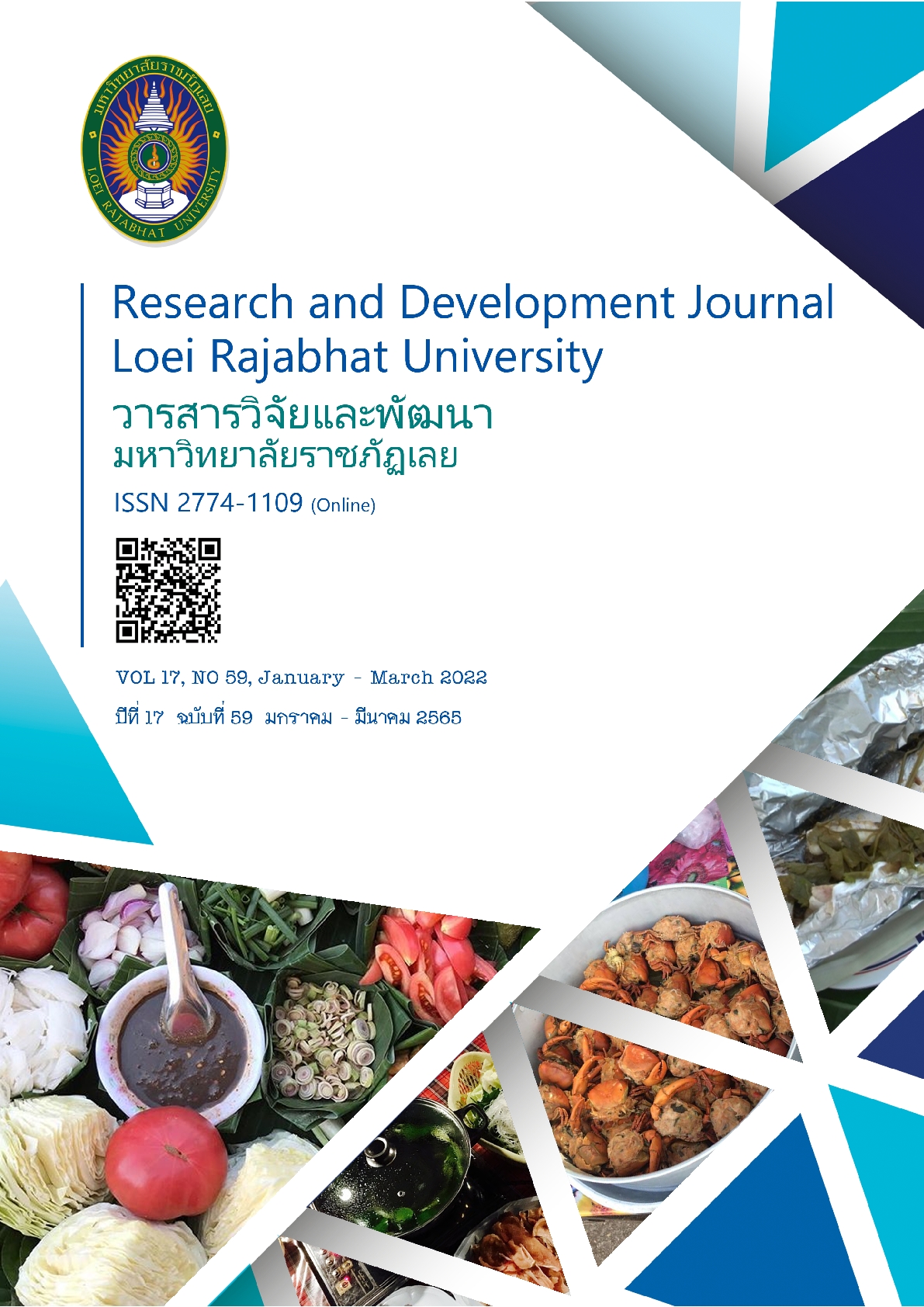Presentation of Semiotic Thainess Through the Content of Tourism Authority of Thailand’s Online Marketing Video Clip
Keywords:
semiotic Thainess, tourism marketing advertisementAbstract
The objective of this research was to study the format of presenting the semiotic Thainess through the content of the Tourism Authority of Thailand's online marketing video clip. This research is a qualitative research using content analysis method and data were collected by analyzing content from the Tourism Authority of Thailand's YouTube website, Amazing Thailand, amounting to 10 topics with the number of more than 500,000 views. The results of the study found that: 1) the content style of the semiotic Thainess can be divided into 9 forms: (1) Thai food, (2) Thai art, (3) Thai way of life, (4) Thai wellness, (5) Thai Events & Festivals, (6) Thai wisdom, (7) Thai fun, (8) Thai animals, and (9) Thai vehicles; 2) the style of the music and the music for the advertisement has a fast rhythm and fun, in harmony with the personality of the Thai people including Thai musical instruments mixed to convey the uniqueness of each region; 3) Language and text styles use repetitions and rhyming words according to the structure of the Thai language for easy recognition including the use of local language to convey the identity of each region; and 4) The narrative style uses the plot and main themes about love during travel, travel to relax from work to get a different experience from tourism, use the scenes of beautiful tourist attractions in Thailand, and use special symbols to correspond and convey the main idea of the story. The results of this research can be used as a guideline for those involved in designing advertising media for tourism marketing to present a Thai identity to be easily remembered and to encourage more travel in the country.
References
กิจติพงษ์ ประชาชิต. (2563). การรับรู้ของนักท่องเที่ยวที่มีต่อสื่อโฆษณาดิจิทัลส่งเสริมการท่องเที่ยวเชิงวัฒนธรรมชาวกูยจังหวัดศรีสะเกษ. วารสารรัตนปัญญา, 5(1), 51-66.
ขวัญชีวา ไตรพิริยะ, สมสุข หินวิมาน, และ พีระ จิระโสภณ. (2561). การวิเคราะห์ความหมายเชิงสัญญะและการประกอบสร้างอัตลักษณ์ความเป็นไทยในโฆษณาเพื่อการท่องเที่ยว. วารสารวิชาการบัณฑิตวิทยาลัยสวนดุสิต, 14(1), 83-95.
ฐิตานันท์ ชัยโฆษิตภิรมย์. (2560). การวิเคราะห์การนำเสนอเนื้อหาบนสื่อสังคมออนไลน์ผู้ให้บริการแพลตฟอร์มหางานสําหรับฟรีแลนซ์ออนไลน์: กรณีศึกษาแฟนเพจเฟซบุ๊ก Fastwork (การค้นคว้าอิสระปริญญามหาบัณฑิต). มหาวิทยาลัยกรุงเทพ, กรุงเทพฯ.
พีรดนย์ บุญมา, และ วิโรจน์ สุทธิสีมา. (2561). การวิเคราะห์สัญญะของนักกีฬาในภาพยนตร์โฆษณาไทย. บทความนำเสนอ ณ การประชุมนำเสนอผลงานวิจัยระดับบัณฑิตศึกษาครั้งที่ 13 มหาวิทยาลัยรังสิต, กรุงเทพฯ.
วีรพล เจียมวิสุทธิ์. (2560). สัญญะกับการสื่อสารอัตลักษณ์ในตราเครื่องหมายสัญลักษณ์การจัดการแข่งขันกีฬาโอลิมปิก. Veridian E-Journal, 10(1), 2077-2092.
เสริมศักดิ์ ขุนพล, และฟารีดา เจะเอาะ. (2562). การส่งเสริมทรัพยากรวัฒนธรรมในการท่องเที่ยว เชิงสร้างสรรค์ผ่านสื่อภาพยนตร์โฆษณาของชุมชนระโนด จังหวัดสงขลา. วารสารวิชาการนวัตกรรมสื่อสารสังคม, 7(2), 231-243.
อัจฉรา จูงกลาง, และ ขวัญจิรา เสนา. (2563). การใช้ภาษาในสื่อโฆษณารถยนต์ญี่ปุ่น: กรณีรถยนต์ TOYOTA PRIUS กับรถยนต์ HONDA FIT. วารสารศิลปศาสตร์ มหาวิทยาลัยรังสิต, 15(2), 203-219.
อุษา ศิลป์เรืองวิไล. (2561). เสน่ห์การท่องเที่ยวผ่านการวิเคราะห์ภาพถ่ายของนักท่องเที่ยวต่างชาติที่เผยแพร่ผ่านสังคมออนไลน์ภายใต้กรอบแนวคิดของสำนักสัญญะวิทยา: กรณีศึกษา กระบี่ กรุงเทพมหานคร โคราช พัทยา และอยุธยา. วารสารวิชามหาวิทยาลัยอีสเทิร์นเอเชีย ฉบับสังคมศาสตร์และมนุษย์ศาสตร์, 8(3), 70-86.
Kotler, P., and Keller K. L. (2016). Marketing Management (15th ed.). Edinburgh: Pearson Education.
Downloads
Published
How to Cite
Issue
Section
License
Copyright (c) 2022 Research and Development Journal, Loei Rajabhat University

This work is licensed under a Creative Commons Attribution-NonCommercial-NoDerivatives 4.0 International License.
ข้อความที่ปรากฎในวารสารฉบับนี้เป็นความคิดเห็นของผู้เขียนแต่ละท่าน สถาบันวิจัยและพัฒนา มหาวิทยาลัยราชภัฏเลย และกองบรรณาธิการ ไม่จำเป็นต้องเห็นด้วยและไม่มีส่วนรับผิดชอบใดๆ
สถาบันวิจัยและพัฒนา มหาวิทยาลัยราชภัฏเลย ขอให้ผู้อ่านอ้างอิงในกรณีที่ท่านคัดลอกเนื้อหาบทความในวารสารฉบับนี้






